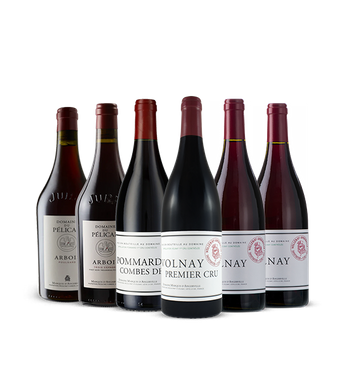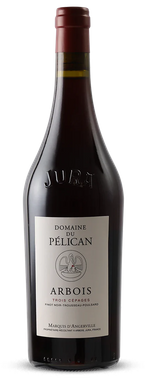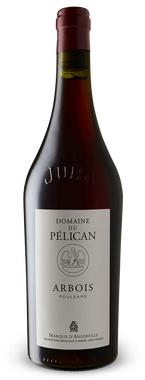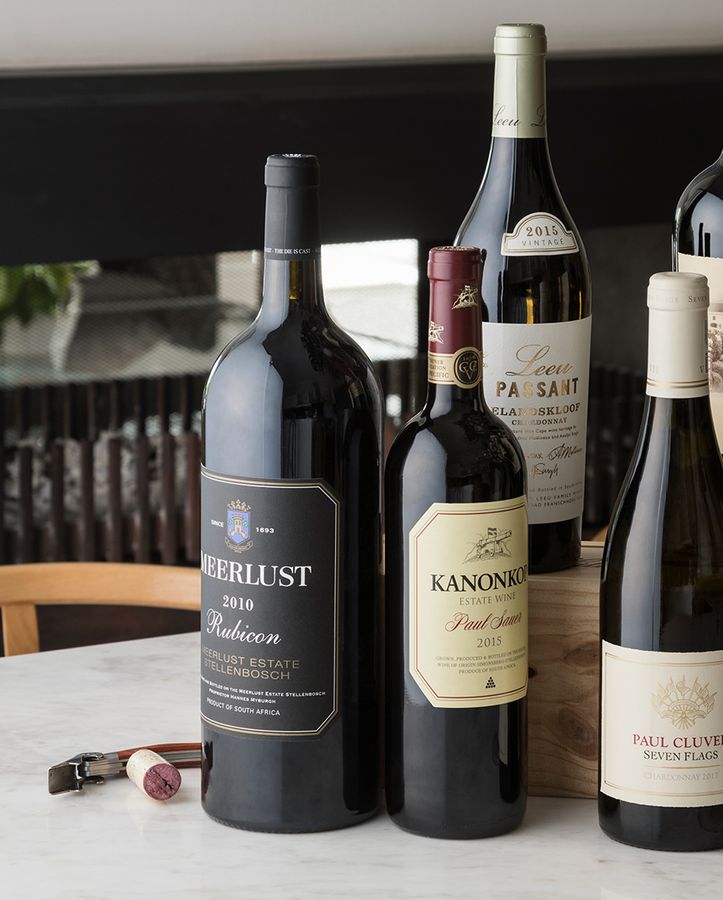The former international banker inherited the iconic Volnay Domaine, Domaine Marquis d’Angerville, owned by generations of his family. His drive and passion to create something new, different, and out of his comfort zone led him to the ancient French wine-making region, the Jura. Here he has started something from scratch, slowly gaining international recognition and acclaim, Domaine du Pélican.
Domaine Marquis d’Angerville in Volnay
Even though the modern history of the Domaine starts in 1906 with Sem d’Angerville, Guillaume’s grandfather, the vineyards belonging to the Domaine, based in Volnay, Burgundy’s côte de Beaune, have remained the same since 1537, then owned by the Dukes of the House of Burgundy.
Sem d’Angerville made history, not only for bringing this historical Domaine back to life but also because he was amongst one of the handful Domaines, like Domaine Gouges of Nuits-Saint-Georges, who fought against the malpractices of some of the Beaune negociants. His search for authenticity and utmost quality led him to bottle his own wines and become one of the founders of the INAO (Institut National de l’Origine et de la qualité).
His son Jacques continued the legacy and took the Domaine to new heights, creating some of the greatest Volnay wines over a period of 50 years.
Guillaume took over the Domaine’s 15 hectares of vines with its eight premiers crus in 2003, following his father’s premature death. One of his biggest contributions has been to convert the whole Domaine to biodynamic farming. In a discussion with the World of Fine Wine he explained “I wanted to identify places that could be improved” he also added that he wanted to be “the most respected red wine estate on the Côte de Beaune” (consumers tend to believe that Côtes de Nuits red are generally better than Côte de Beaune reds).
Domaine du Pélican in Arbois, Jura
Having inherited such a legacy, Guillaume could have only focused on his prestigious Volnay wines but instead chose to start a new project.
The story begins in 2007 with Guillaume and his wife lunching at the two-star Michelin restaurant Le Taillevent in Paris as they did regularly, well known for its extensive wine list. As is customary every time they visit the restaurant, the Sommelier was to pick a white wine, not Burgundy, and to serve it blind. During this particular visit, Guillaume thought the Sommelier had forgotten the rule as he was convinced he had a great Burgundian Chardonnay in his glass. Except it was from the Jura.
His perception of the region changed completely and from 2008 to 2012, with the assistance of Yves Herody, the geologist used for soil analysis of his vineyards in Burgundy and the support (initially reluctant) from Francois Duvivier, D’Angerville’s Estate manager, they found the perfect site. Today they have three estates, including Jacques Puffeney’s vineyards (affectionately known as the pope of Arbois), all farmed biodynamically. They have a total of between 15 -16 hectares, same as in Volnay to keep it manageable on a “human scale”.
Apart from having some of the best terroirs, complex limestone and marl soils, what drew Guillaume to this region was that it is unspoiled, authentic, with huge personality and potential. It was not easy to be accepted by the locals as it is quite rare for individuals “foreign” to the region to want to farm here. “The region’s entire wine production comes from about 2000 hectares, equivalent to just three Burgundy villages,” said d’Angerville. Most Jura wines are consumed and sold within the region and hardly sold elsewhere in France or abroad. Thanks to Guillaume d’Angerville and his Domaine du Pélican, things are changing.
The 2018 marks the first release of a number of single vineyard wines and Domaine du Pélican’s first Pinot noir from Jura. All the wines are made in an artisanal way and worth exploring



